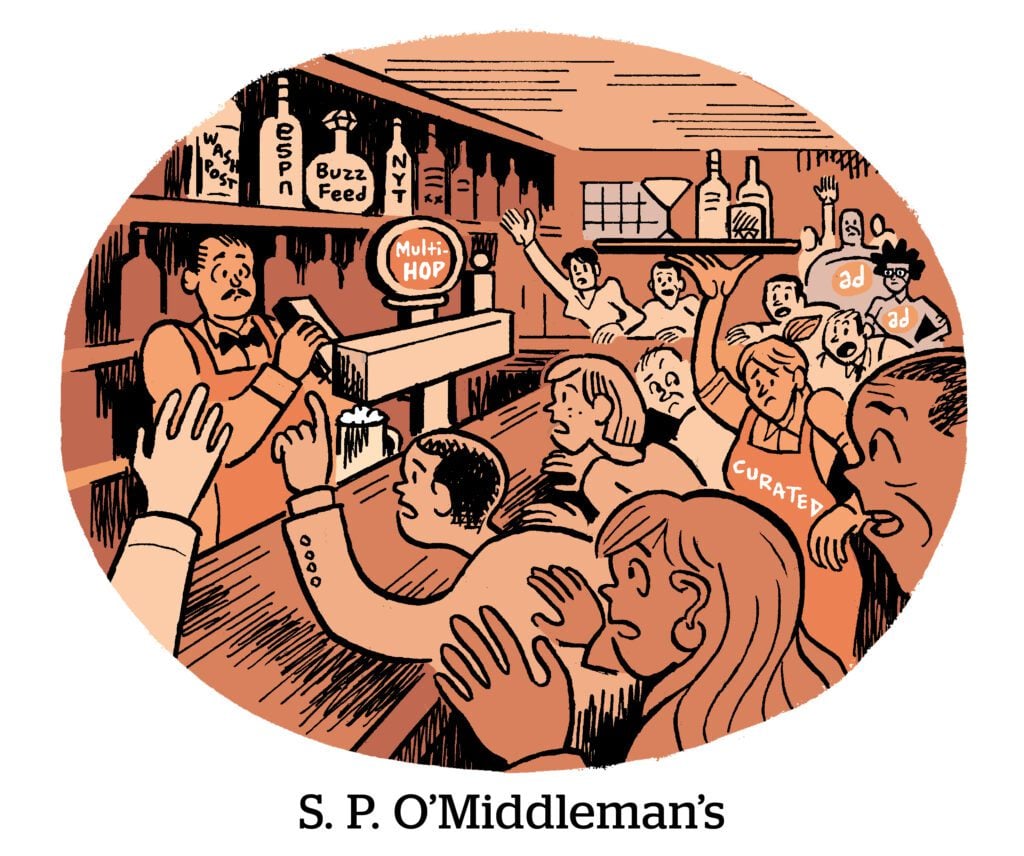The line between the buy side and sell side of digital advertising is getting blurrier by the day. Now PubMatic is crossing the aisle.
On Monday, the SSP announced the launch of Activate, an end-to-end solution cut from the same cloth as Magnite’s ClearLine and The Trade Desk’s OpenPath. Index Exchange is sitting this one out.
Activate allows brands and agencies to buy CTV and online video inventory through PubMatic via direct deals, including programmatic guaranteed and private marketplaces. It doesn’t support real-time bidding.
PubMatic is positioning Activate as a solution for supply path optimization (SPO), which is the practice of cutting out intermediaries from the supply chain.
“When you have an SSP and a DSP, there are hops that lead to discrepancies, latency, match rate issues, data proliferation and increased carbon consumption,” PubMatic CEO Rajeev Goel told AdExchanger. “We challenged ourselves to say, ‘How can we seamlessly connect the buyer and seller in a way that solves all of these challenges?’”
By bypassing DSPs, of course.
How it works
Activate lets buyers view available inventory, apply their first-party data to those available audiences, activate campaigns and access reporting and analytics for optimization. The product allows buyers to use whichever ad server they want.
PubMatic collects a percentage of the advertiser’s spend, although the company is considering subscription models as well, Goel said.
PubMatic had been working on Activate for the past 18 months. Its acquisition of measurement and reporting platform Martin in September accelerated the development process by bringing in more expertise on the challenges agencies and advertisers face in campaign planning, Goel said. The Martin deal also brought buy-side workflow tools, analytics and optimization tech.
Activate’s launch partners include ad agencies Dentsu, Havas and OMG Germany, CPG brand Mars, LG and Fubo.
DSP disintermediation and SSP consolidation
PubMatic’s move is the latest development in what’s become a trend, driven by SPO, of the buy side encroaching on sell side’s turf and vice versa.
SPO is largely a buy-side phenomenon, and efforts have mostly been focused on cutting out SSPs, which are seen by some advertisers as commoditized services with few unique benefits and therefore expendable in the supply chain.
The Trade Desk’s OpenPath and GroupM’s Premium Marketplace are both good examples of buy-side players creating direct connections to publisher inventory.
But SSPs, including Magnite and PubMatic, are now looking to flip the script by going directly to buyers and cutting out DSPs in an effort to remain competitive.
“Data is drying up on the buy side of the ecosystem,” said Goel, pointing to privacy legislation and cookie and device ID deprecation.
When advertisers apply their targeting and optimization data through sell-side platforms, they get higher match rates and better ROI, Goel said, because SSPs have more direct access to publishers’ audience data and can more effectively curate publisher inventory.
The rise of sell-side campaign activation and inventory curation also means more competition between SSPs.
Buyers looking to curate inventory on the sell side to ensure they’re buying the right ad placements need more efficient tools. “It doesn’t make sense, operationally, to do that across a dozen SSPs,” Goel said. “You’re going to do that across one, two or three SSPs.”
Still, Activate represents a shift in focus for PubMatic, which has historically catered to the sell side only. But the fact that the company is now also serving the needs of buyers does not mean PubMatic is introducing a DSP, Goel said.
“Our goal is to bring the non-programmatic, IO-based dollars that are sitting on the sidelines into the programmatic ecosystem, which will benefit DSPs and other ecosystem players,” he said.
The hope is that by streamlining and automating direct buys for CTV and online video through a programmatic platform, advertisers will be encouraged to spend more.
But, Goel added, as media channels mature, ad spend tends to gravitate toward biddable inventory, which DSPs are in the best position to take advantage of.
The battle for market share
Much like Magnite’s ClearLine, PubMatic’s Activate is focused solely on video placements, including both CTV and online video.
CTV inventory is still primarily bought through direct deals. PubMatic estimates that 57% of the $65 billion global CTV market is currently transacted via direct insertion orders. That’s $37 billion just waiting to go programmatic.
PubMatic also estimates that roughly 18% of the $150 billion online video market, or $28 billion, is transacted via direct IOs.
The decision by both PubMatic and Magnite to focus their end-to-end solutions on CTV could speak to a weakness DSPs have in the CTV market.
The Trade Desk’s OpenPath connects advertisers to publishers via a custom Prebid adapter, meaning the solution is mainly suited for buying inventory sold via open auction. Since most CTV inventory is still sold via direct IO, supply-side platforms are looking to corner this growing market by launching direct buying solutions specifically for CTV.
“We’re in this inflection of CTV growth,” Goel said, “and there’s a clear opportunity to help agencies and advertisers migrate those IOs into more programmatic transactions.”
Correction 5/8/23: An earlier version of this article said Magnite’s ClearLine was built on top of the SpringServe ad server, meaning advertisers can only access inventory from publishers that also use SpringServe. Magnite clarified that, although SpringServe is the foundation for ClearLine, ClearLine is actually server agnostic.
The article also originally said ClearLine is only for CTV ad placements. Magnite clarified that ClearLine is for CTV and online video.
















